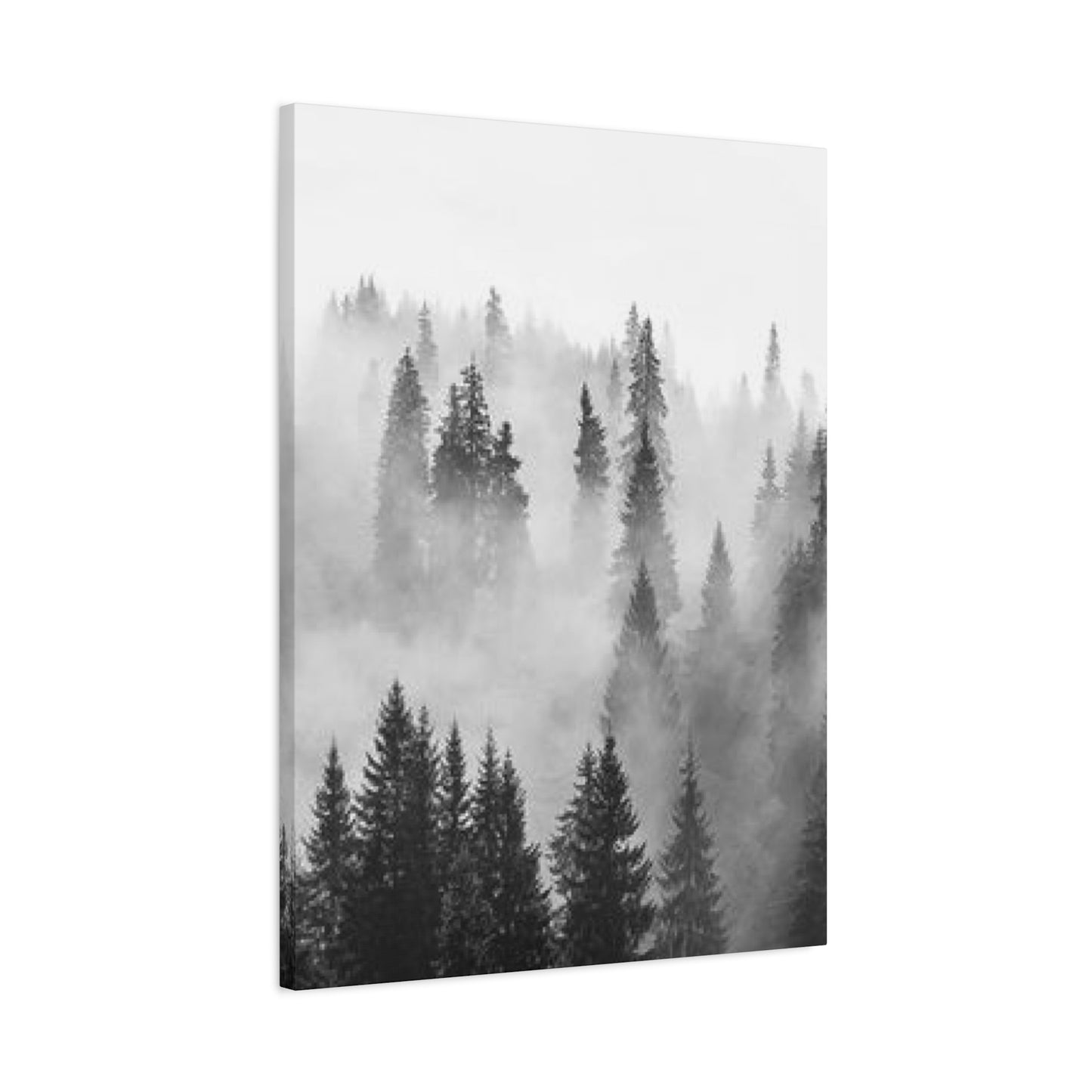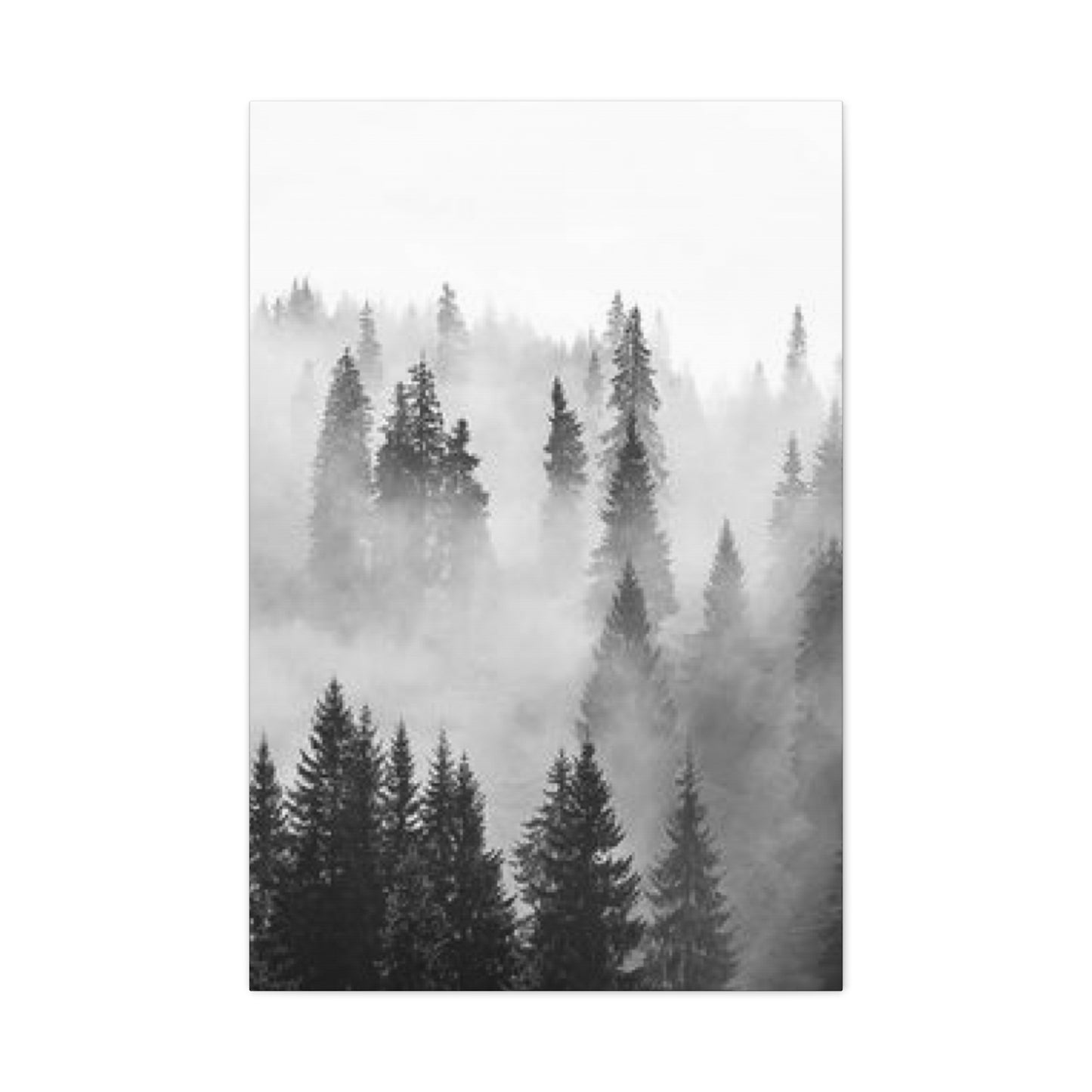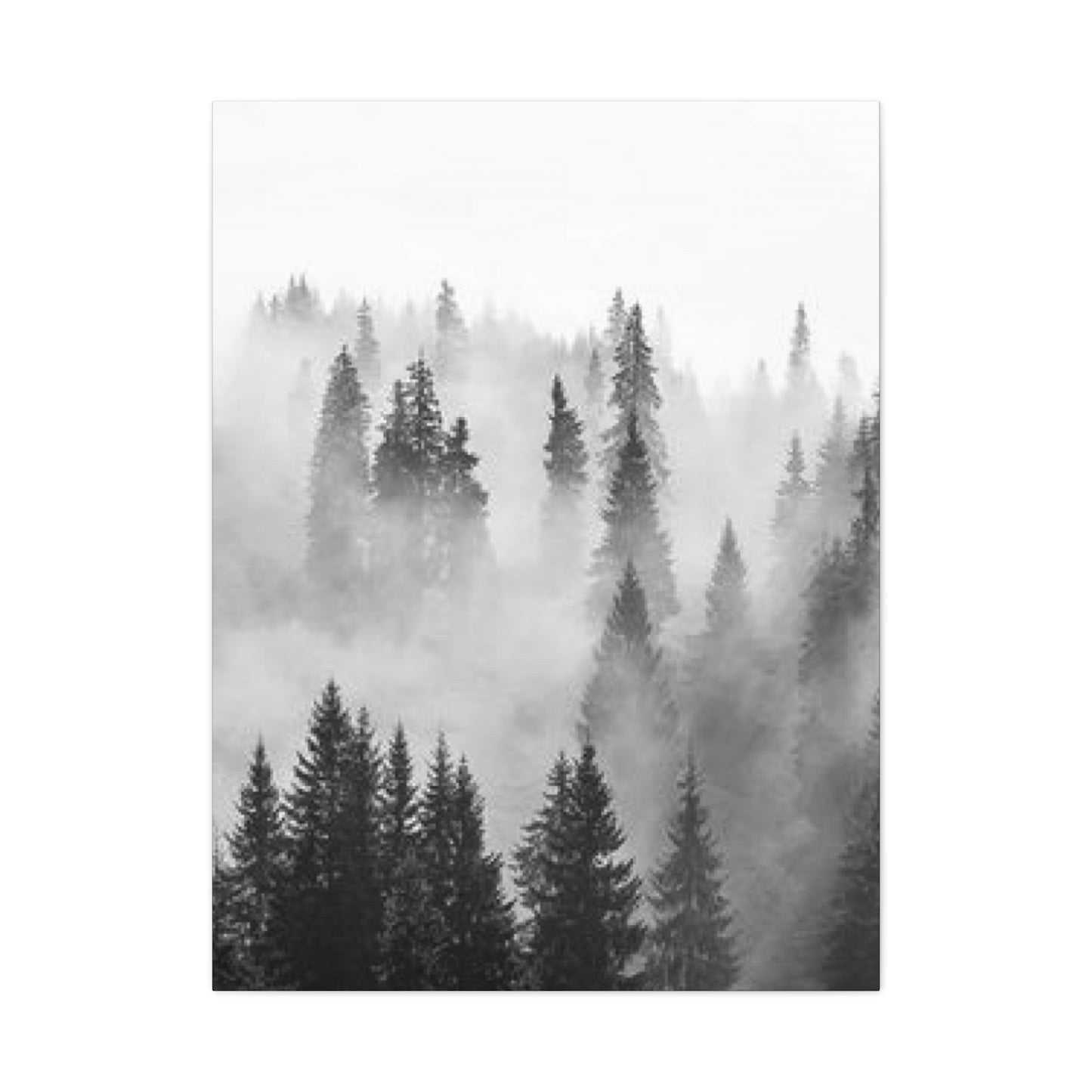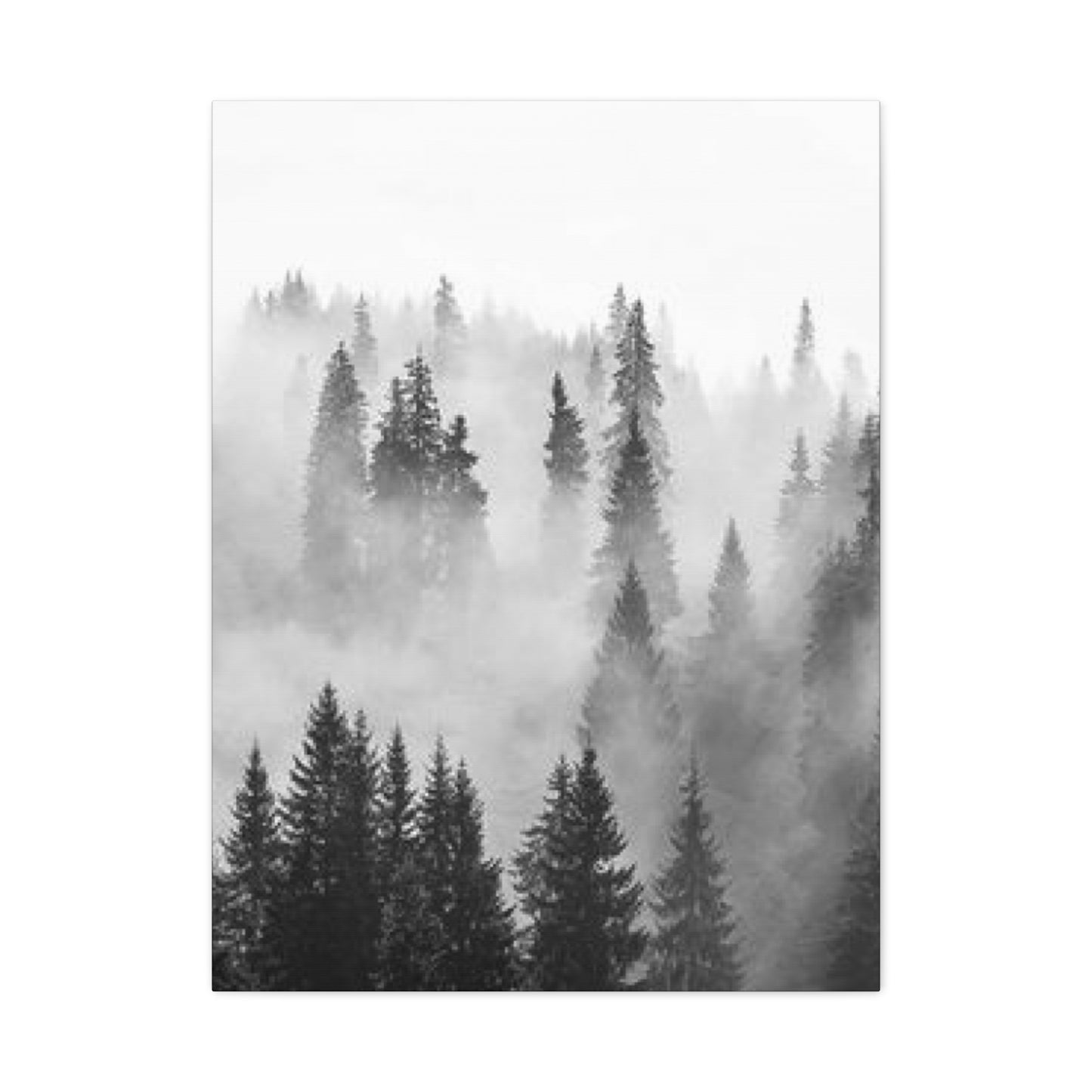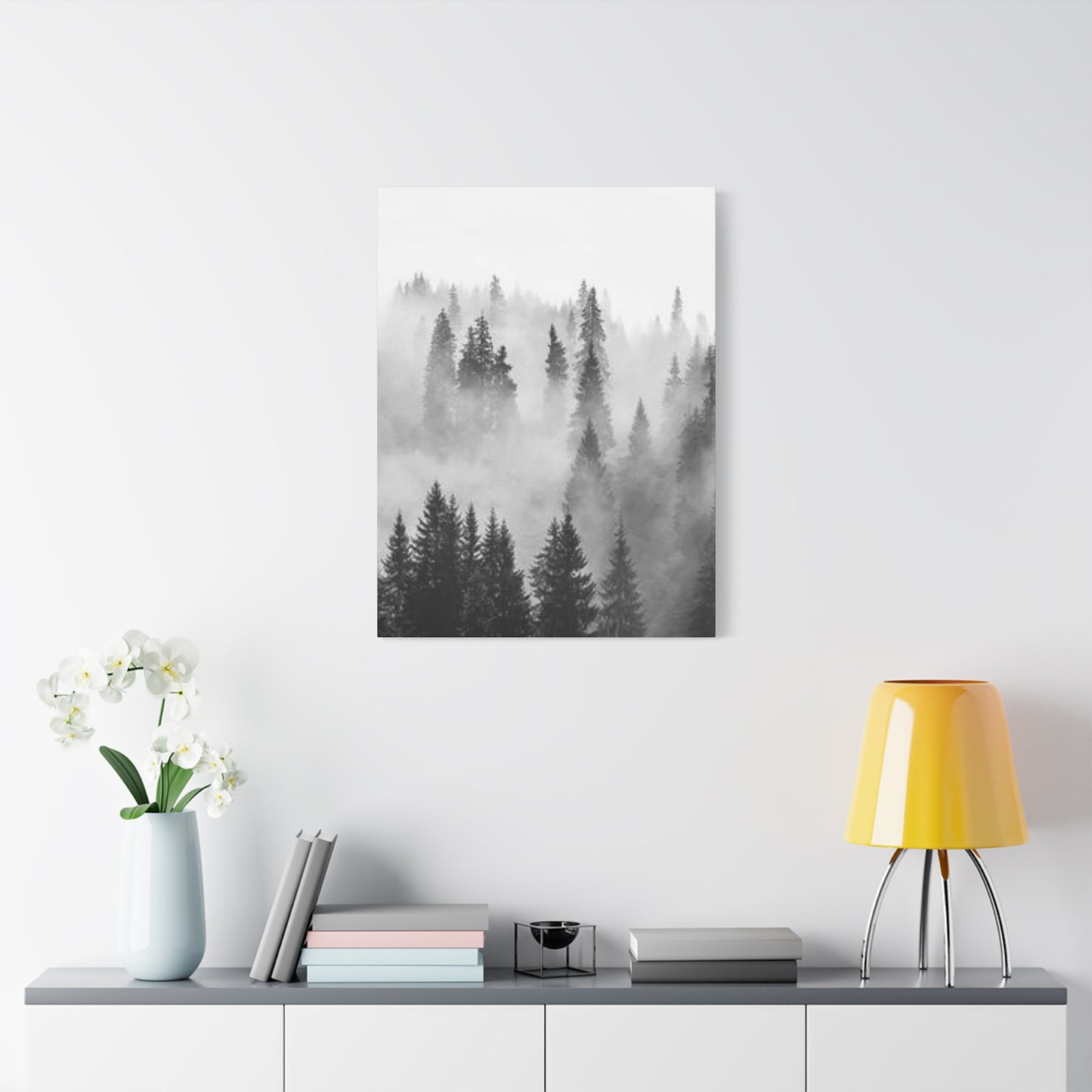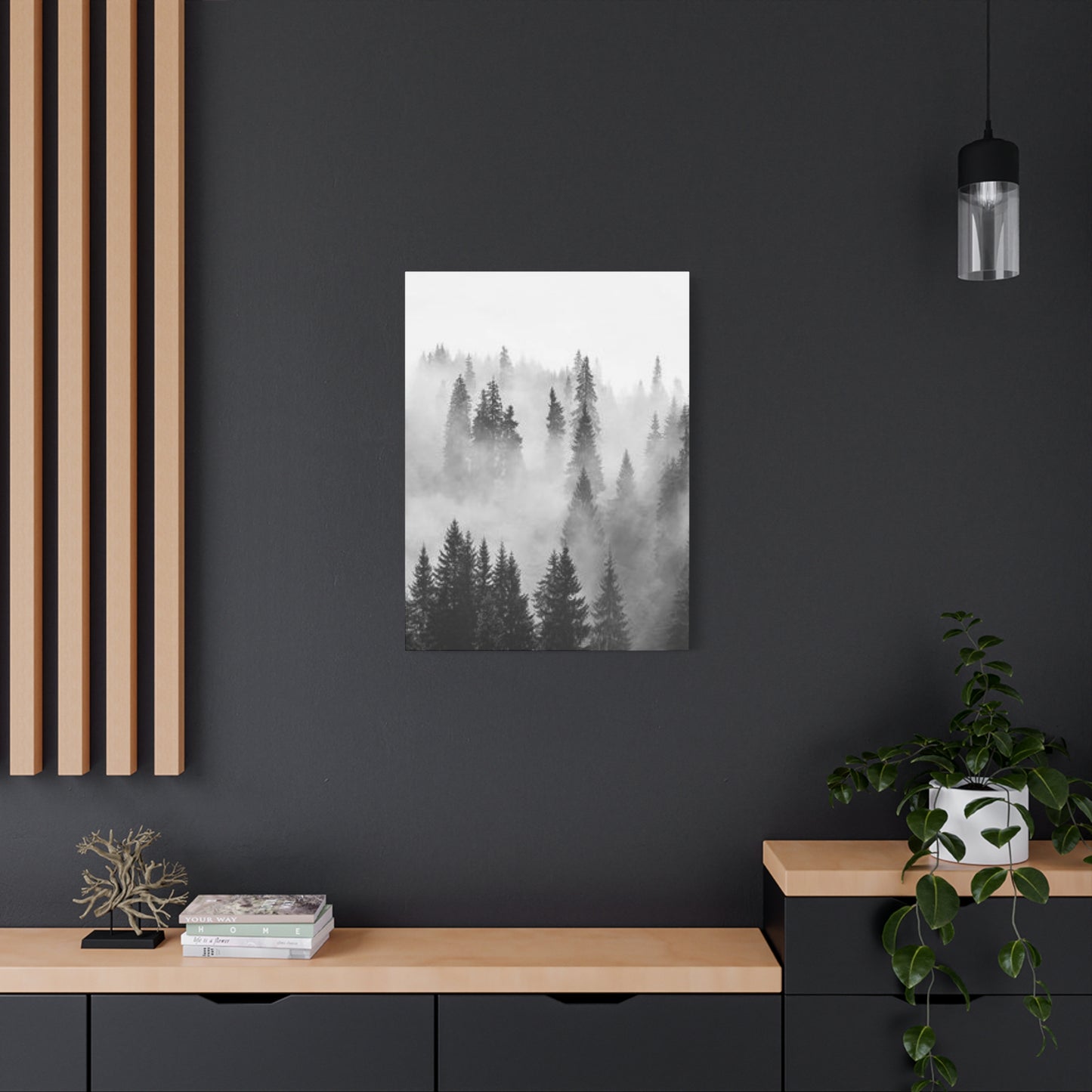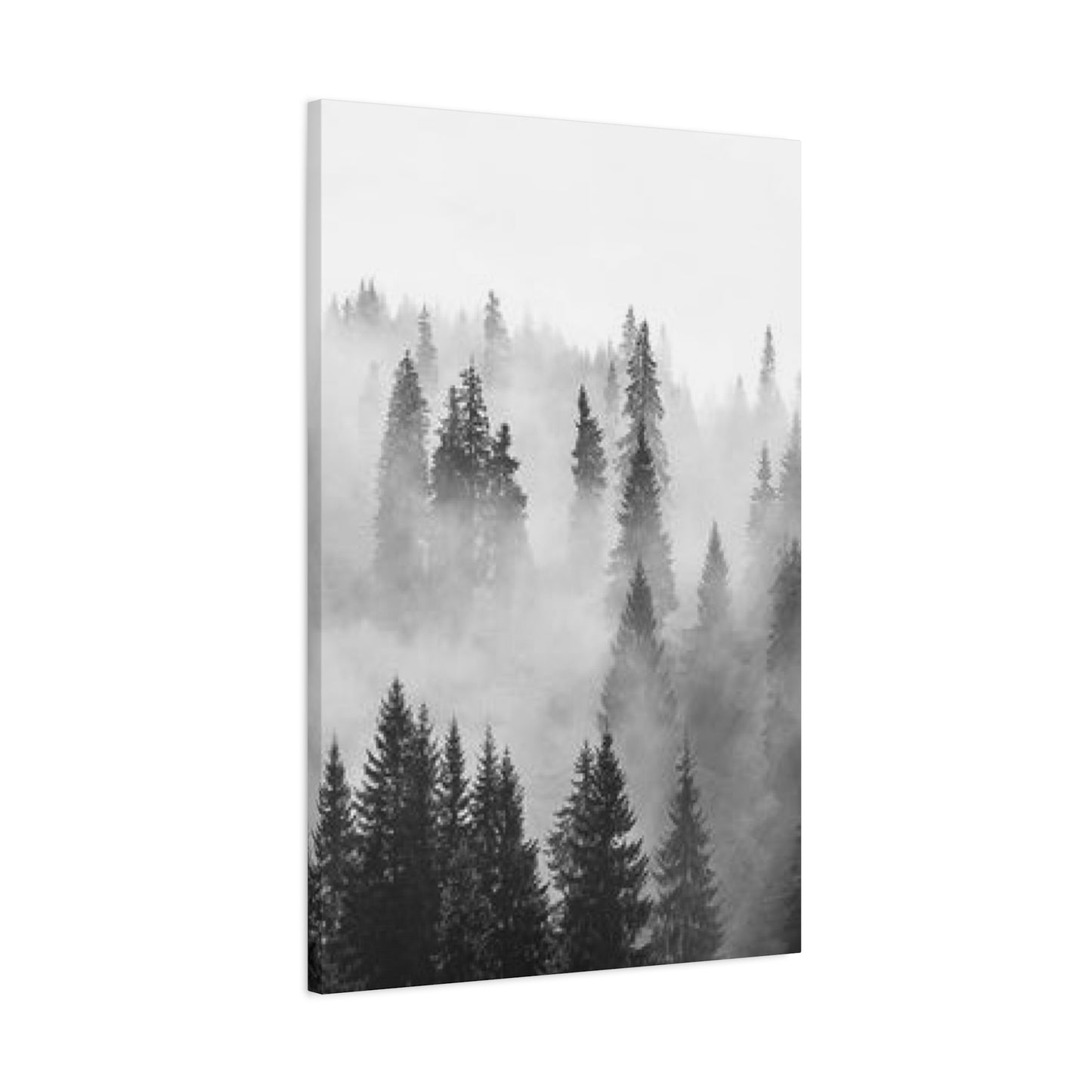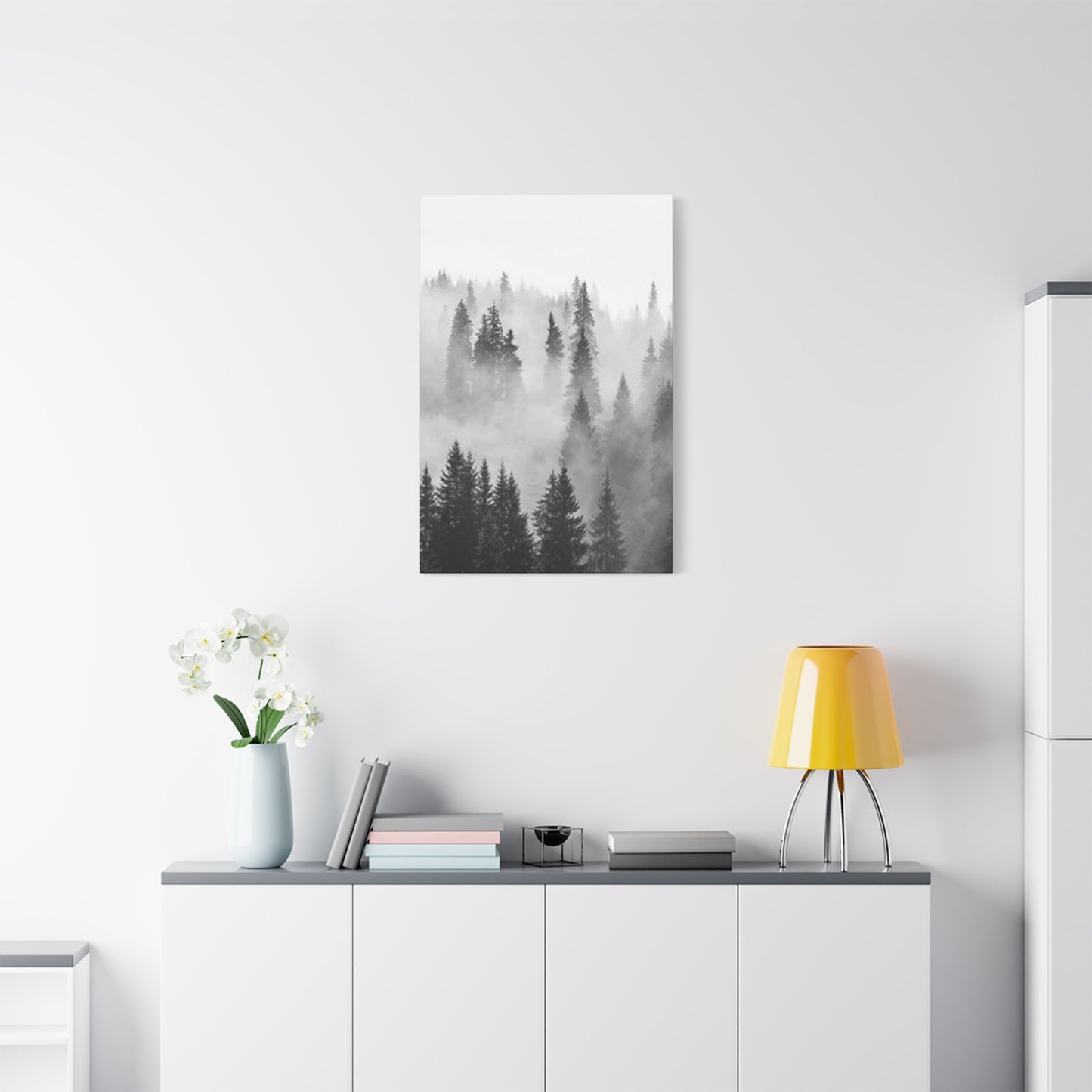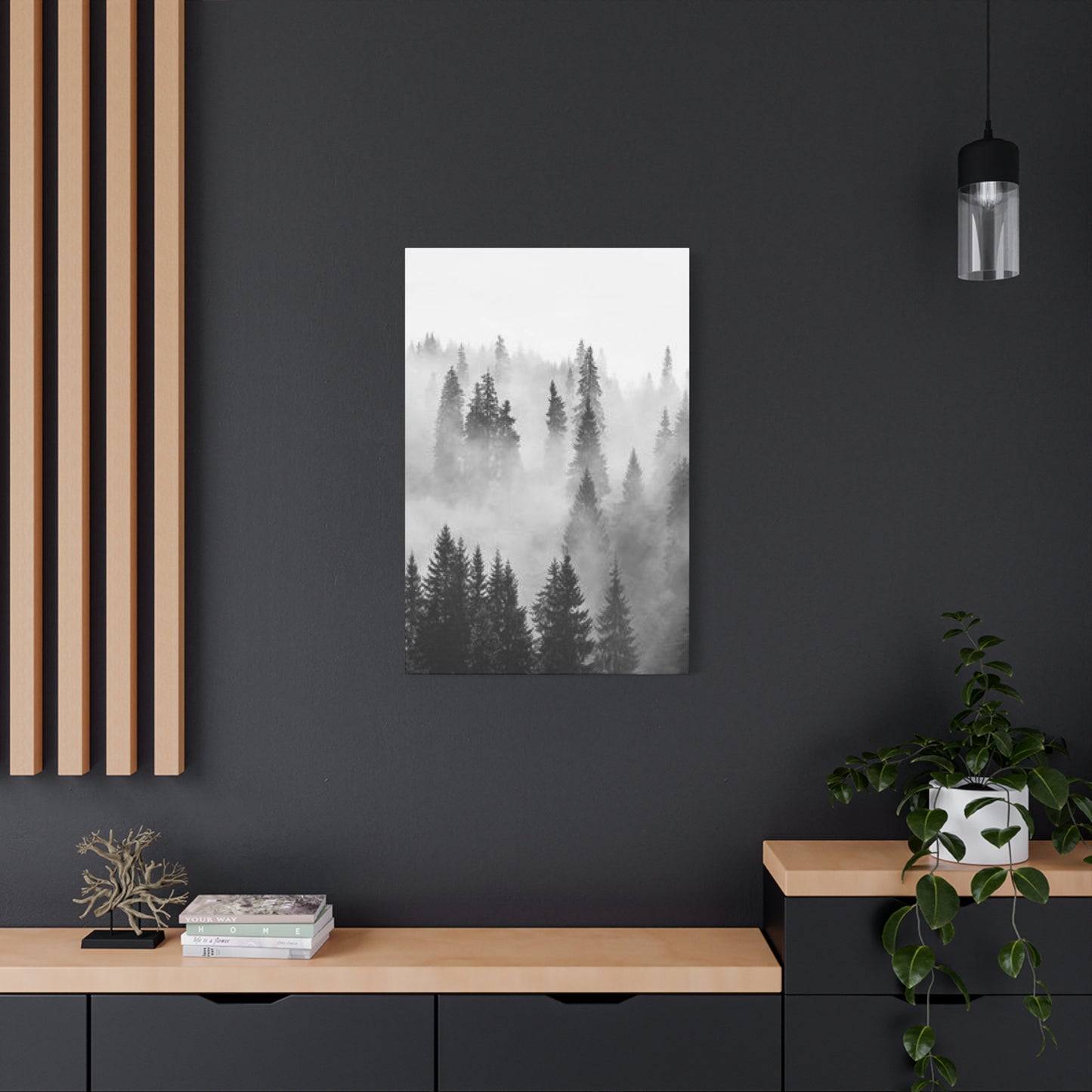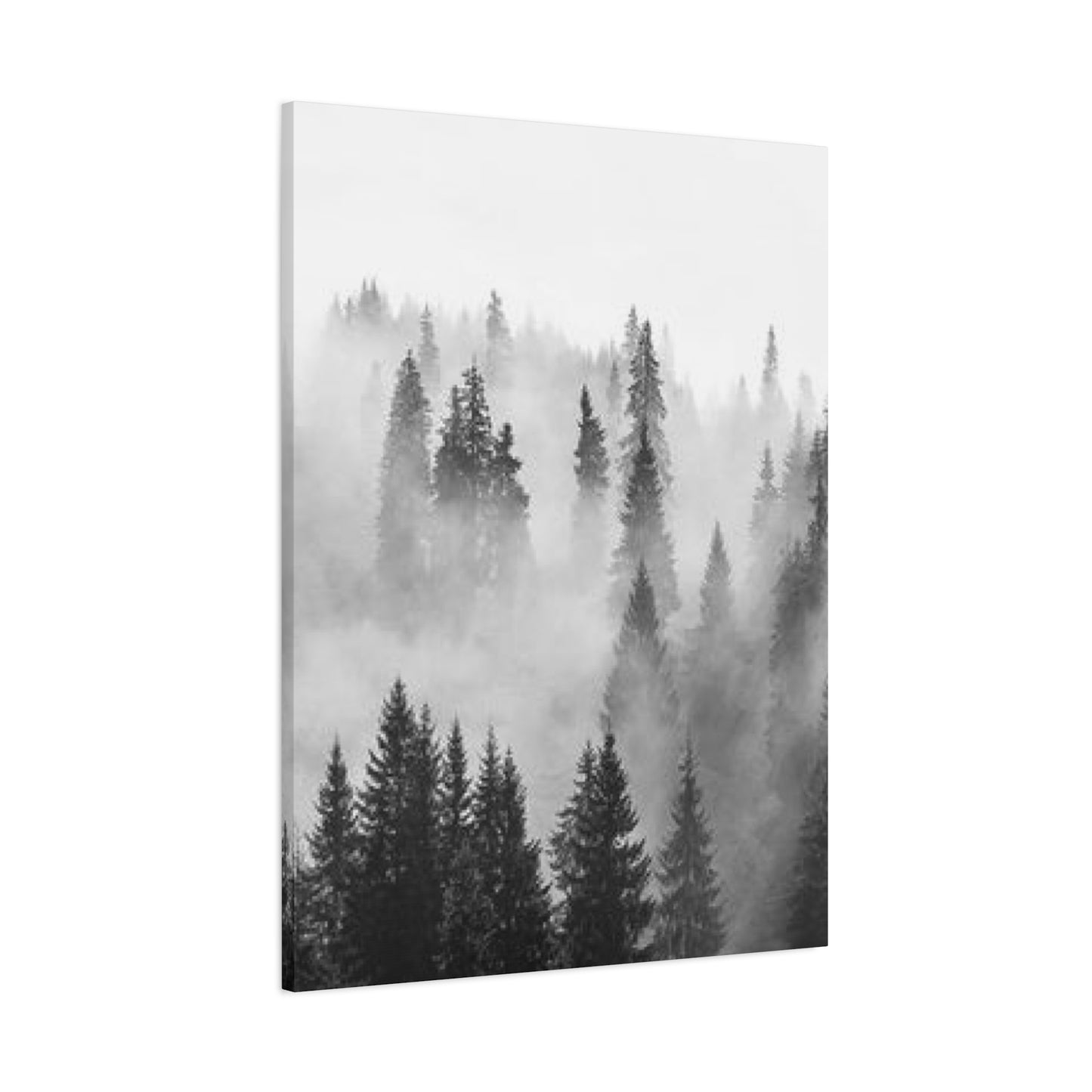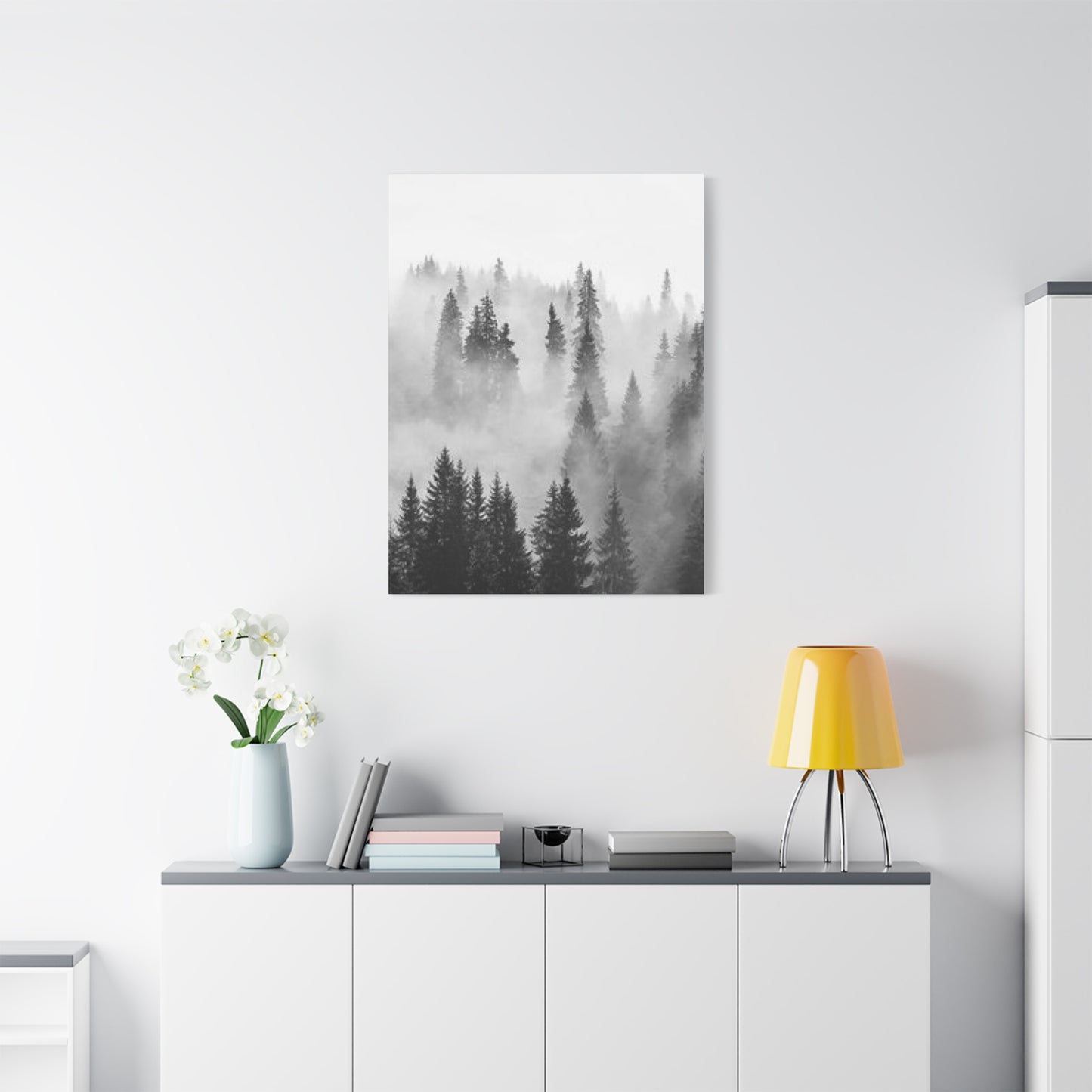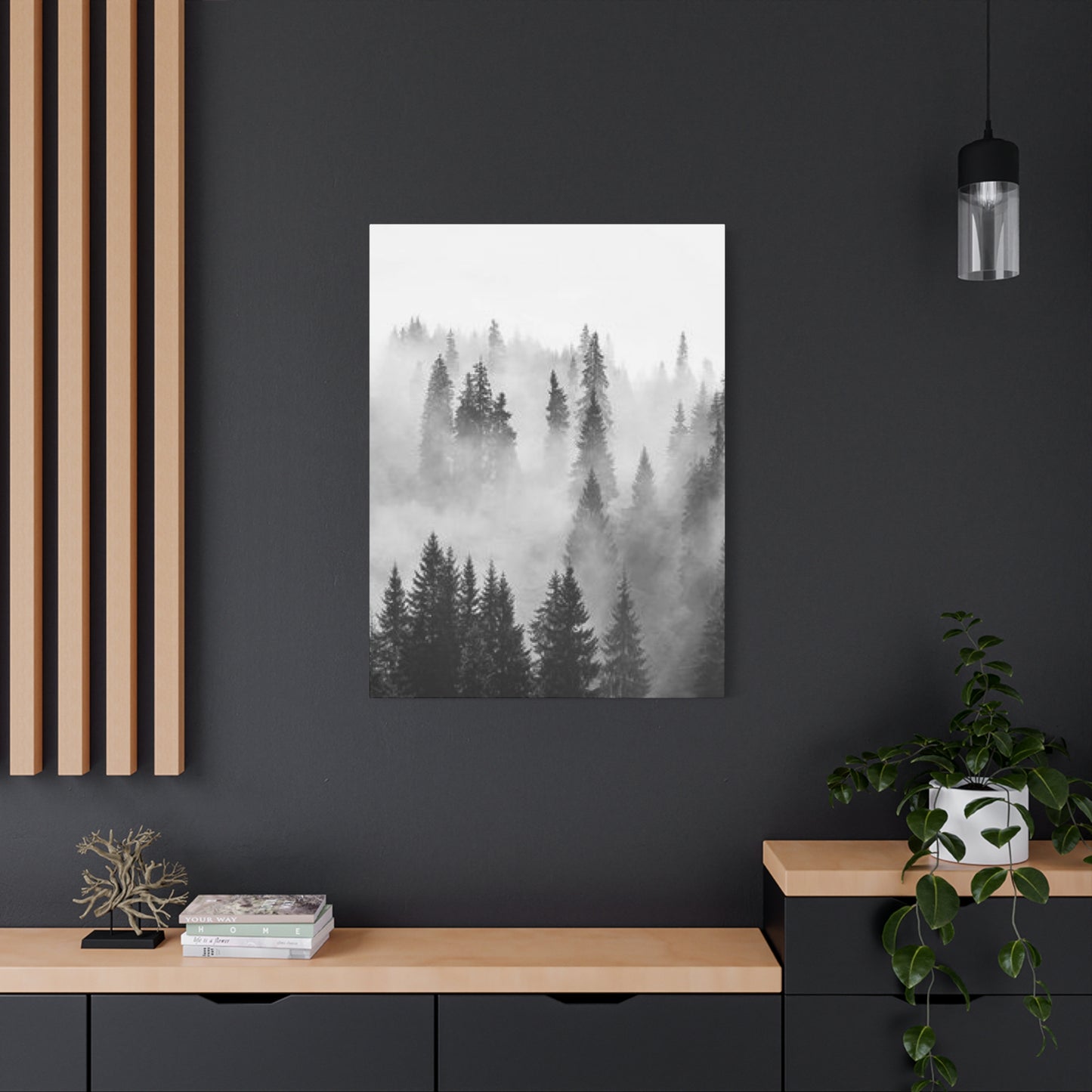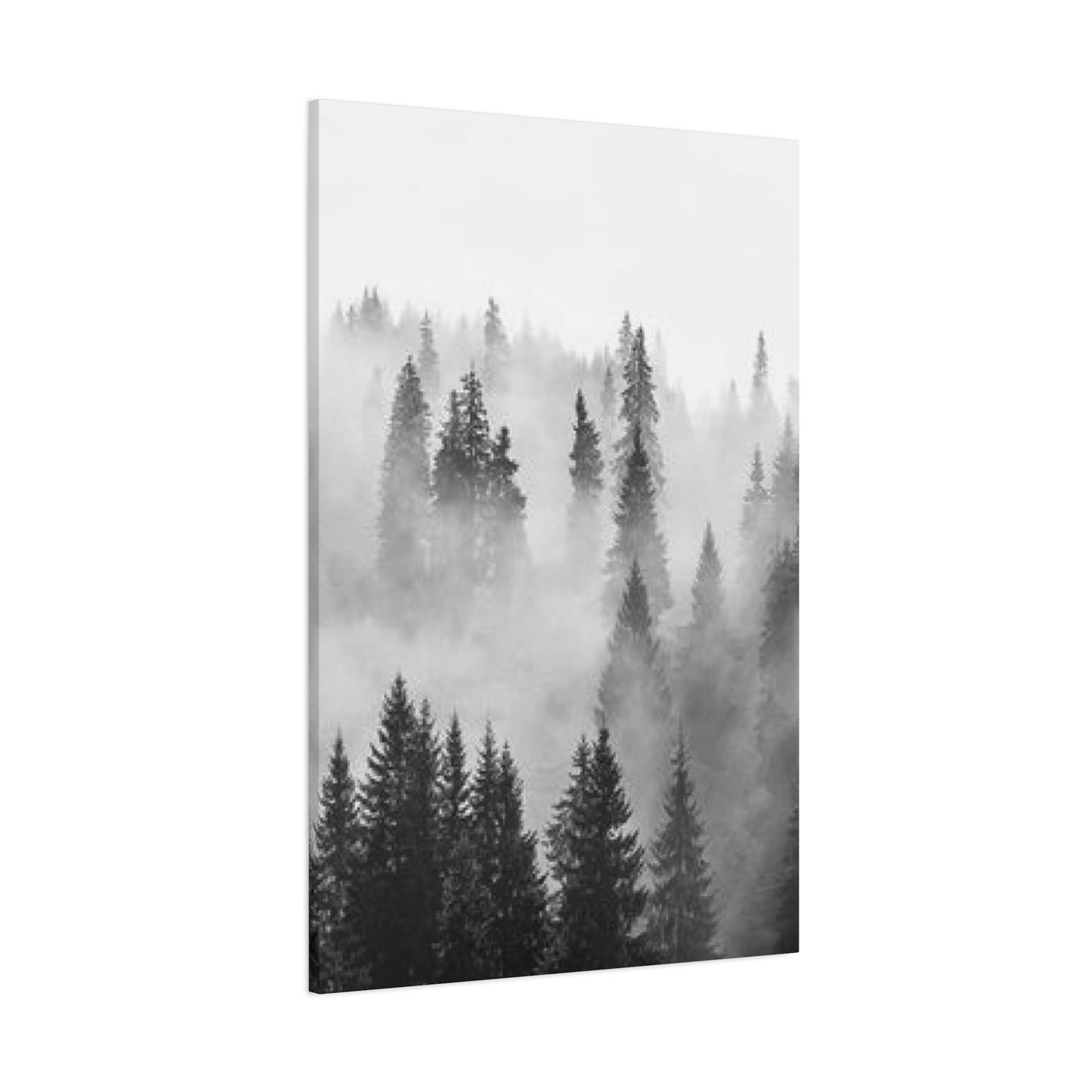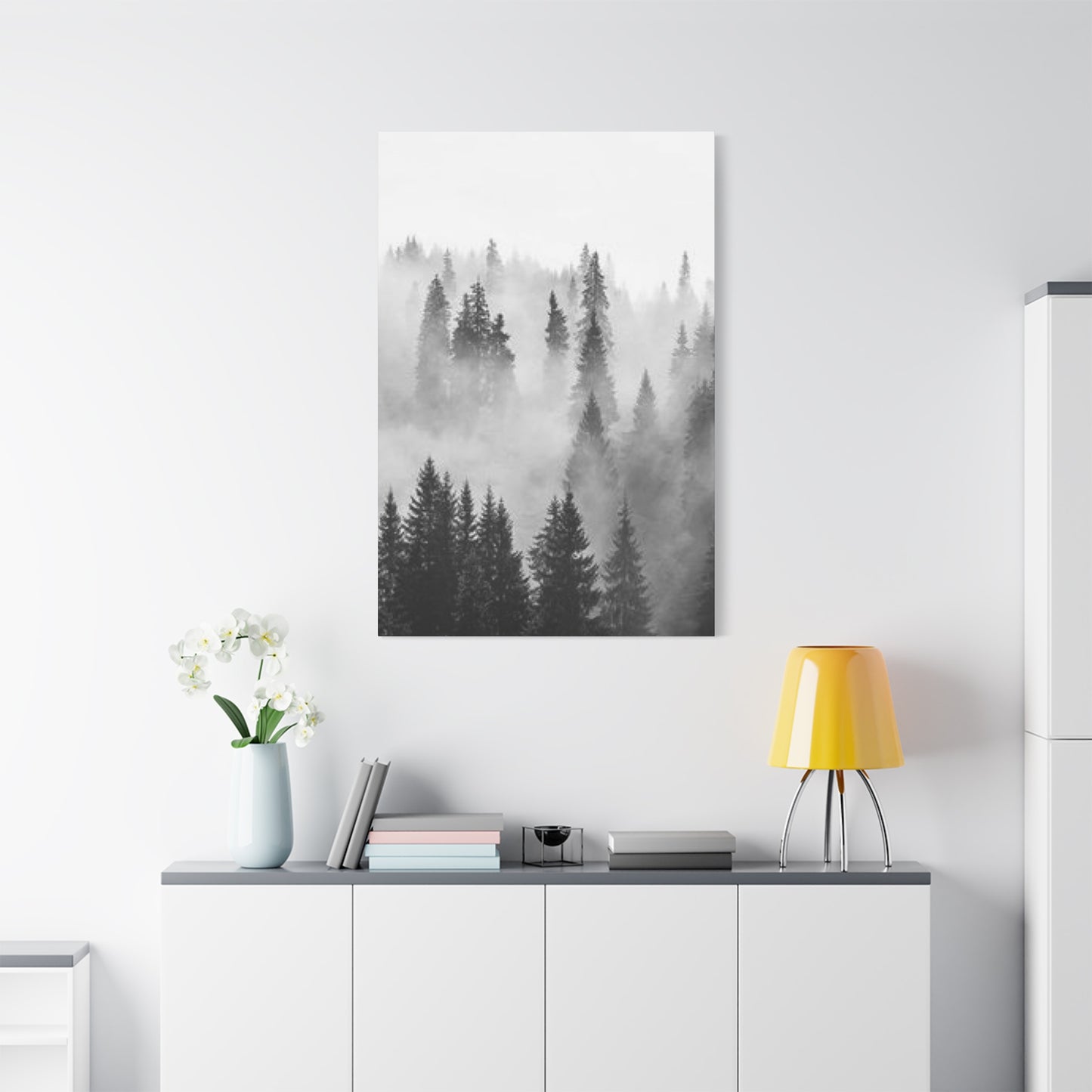Mystical Fog Forest Wall Art: Creating Atmospheric Interior Design with Nature-Inspired Prints
The allure of misty woodland landscapes has captivated artists and interior designers for centuries, offering a perfect blend of mystery, tranquility, and natural beauty that translates exceptionally well into home decor. Fog forest wall art represents one of the most sophisticated approaches to bringing the outdoors inside, creating spaces that feel both grounded in nature and elevated by artistic interpretation. These atmospheric pieces serve as windows to otherworldly landscapes, where trees emerge from ethereal mists and light filters through dense canopies, creating moments of pure visual poetry within our living spaces.
The growing popularity of fog forest artwork stems from our collective yearning to reconnect with nature in an increasingly urbanized world. These pieces offer more than mere decoration; they provide psychological refuge, creating calm sanctuaries within busy homes where the mind can wander through imaginary woodlands wrapped in gentle mists. The soft, muted palettes typical of misty forest scenes work harmoniously with contemporary interior design trends while maintaining timeless appeal that transcends fleeting style movements.
Modern homeowners are discovering that fog forest wall art possesses unique properties that make it exceptionally versatile for various interior applications. The inherent softness of foggy landscapes naturally complements both minimalist and maximalist design philosophies, serving as either subtle background elements or striking focal points depending on placement and scale. The neutral color schemes found in most misty woodland scenes allow these artworks to integrate seamlessly with existing color palettes while adding depth and visual interest to otherwise plain walls.
Mystical Fog Forest Wall Art Selections
Creating the perfect mystical fog forest gallery wall requires careful consideration of both artistic merit and atmospheric impact. The most compelling mystical fog forest wall art pieces capture the ephemeral quality of morning mists as they dance between towering trees, creating layers of depth that draw viewers into imaginary woodland adventures. These artworks often feature dramatic vertical compositions that mirror the upward reach of forest giants, while horizontal mists provide counterbalancing elements that create visual harmony and movement within the frame.
The selection process for mystical fog forest wall art should prioritize pieces that demonstrate mastery of atmospheric perspective, where distant elements fade into soft, grey-blue tones while foreground details remain sharp and defined. This technique creates the illusion of infinite depth, making even modest-sized prints appear to contain vast, explorable landscapes. The most successful mystical fog forest compositions balance recognizable forest elements with abstract misty passages, allowing viewers to project their own experiences and emotions onto the artwork.
Color temperature plays a crucial role in mystical fog forest wall art effectiveness. Cool-toned pieces with blue and grey undertones evoke early morning tranquility and create calming environments perfect for bedrooms and meditation spaces. Warmer interpretations featuring golden and amber highlights suggest sunset filtering through mists, bringing cozy intimacy to living areas and dining rooms. The most versatile mystical fog forest pieces incorporate subtle color variations that shift with changing light conditions throughout the day, creating dynamic visual experiences that evolve with natural lighting cycles.
Texture representation in mystical fog forest wall art can dramatically impact the overall effectiveness of these pieces. Smooth, ethereal fog passages contrast beautifully with the rough bark textures and intricate branch patterns found in forest scenes, creating tactile visual experiences that engage multiple senses simultaneously. High-quality reproductions should preserve these textural contrasts, allowing viewers to almost feel the dampness of morning mist and the solidity of ancient tree trunks through careful attention to surface detail and printing techniques.
The scale and proportion considerations for mystical fog forest wall art require thoughtful planning to achieve maximum impact. Large-format pieces work exceptionally well as statement artworks in spacious rooms, where their immersive qualities can be fully appreciated without overwhelming smaller spaces. Medium-sized works offer excellent versatility, working effectively both as standalone pieces and as components within larger gallery wall arrangements. Smaller mystical fog forest prints excel in intimate settings where close viewing allows appreciation of subtle details and atmospheric nuances that might be lost at greater distances.
Bringing Nature Indoors with Fog Forest Prints
The practice of bringing nature indoors with fog forest prints represents a sophisticated approach to biophilic design that goes beyond simple plant placement or natural material incorporation. These atmospheric artworks serve as emotional bridges between interior spaces and the natural world, providing psychological benefits that extend far beyond their aesthetic contributions to home decor. The gentle, organic forms found in misty woodland scenes offer visual relief from the geometric precision that dominates modern architecture and furnishing design, creating more balanced and harmonious living environments.
Fog forest prints excel at creating what environmental psychologists term "soft fascination," a gentle form of mental engagement that promotes relaxation and cognitive restoration without demanding focused attention. The flowing, organic shapes of mist-wrapped trees provide perfect subjects for contemplative viewing, allowing minds to wander freely through imaginary landscapes while remaining grounded in the comfort of home environments. This psychological effect makes fog forest prints particularly valuable in spaces designated for relaxation, meditation, or creative work where mental clarity and calm focus are priorities.
The integration of fog forest prints into existing interior design schemes requires careful consideration of both visual harmony and emotional impact. These nature-inspired artworks work most effectively when they complement rather than compete with existing design elements, serving as unifying forces that tie together disparate furnishing styles and color schemes. The neutral palettes typical of misty woodland scenes provide excellent foundations for both monochromatic and colorful interior designs, offering flexibility that few other art subjects can match.
Placement strategies for bringing nature indoors with fog forest prints should prioritize locations where their calming influence can be most appreciated and effective. Living rooms benefit from fog forest prints positioned where they can be viewed during relaxation periods, creating visual escape routes that transport minds from daily stresses to peaceful woodland settings. Bedroom applications should focus on promoting restful sleep through gentle, non-stimulating imagery that encourages mental quiet and physical relaxation as bedtime approaches.
The seasonal aspects of bringing nature indoors with fog forest prints offer unique advantages for homeowners seeking year-round natural connections. Unlike outdoor gardens that change dramatically with seasons, fog forest artworks provide consistent natural beauty that remains constant regardless of weather conditions or seasonal variations. However, the atmospheric qualities inherent in these prints can be enhanced through strategic lighting changes that mirror natural seasonal shifts, creating dynamic interior experiences that evolve throughout the year while maintaining core aesthetic principles.
Technical considerations for bringing nature indoors with fog forest prints include proper lighting design that enhances rather than diminishes the atmospheric qualities these artworks are meant to convey. Soft, diffused lighting works best with misty woodland scenes, avoiding harsh directional lights that might flatten the subtle gradations essential to fog forest imagery effectiveness. Natural light from windows can provide ideal illumination during daylight hours, while carefully positioned accent lighting can extend viewing pleasure into evening hours without compromising the peaceful ambiance these prints are designed to create.
Serene Fog Forest Canvas Ideas
Developing effective serene fog forest canvas ideas requires deep appreciation for the subtle interplay between light, atmosphere, and natural forms that characterize the most peaceful woodland environments. The most successful serene fog forest compositions capture moments of perfect stillness where time seems suspended and the natural world exists in harmonious balance. These contemplative scenes typically feature gentle transitions between foreground and background elements, creating visual journeys that unfold gradually as viewers spend time with the artwork.
The composition principles underlying effective serene fog forest canvas ideas often center on creating visual calm through balanced asymmetry and organic flow patterns. Rather than relying on rigid geometric structures, these artworks embrace the irregular beauty of natural growth patterns and atmospheric movements, resulting in compositions that feel both stable and dynamic. The most compelling serene fog forest canvases achieve this balance through careful placement of key elements such as prominent tree trunks or clearings that serve as visual anchor points within otherwise fluid atmospheric environments.
Color palette development for serene fog forest canvas ideas should prioritize subtle gradations and harmonious relationships that promote psychological calm and visual comfort. Cool grey-blues traditionally dominate these palettes, reflecting the natural colors of morning mists and overcast forest lighting conditions. However, the most sophisticated serene fog forest canvases incorporate warm undertones that prevent coldness and add visual richness without compromising the overall peaceful character these pieces are meant to convey.
Atmospheric depth techniques in serene fog forest canvas ideas rely heavily on masterful handling of value relationships and edge quality variations. Distant forest elements should dissolve gradually into misty backgrounds through progressively lighter values and softer edges, while foreground details remain sharp and well-defined to create convincing spatial illusions. The transition zones between sharp foreground elements and soft background passages require particular attention, as these areas often determine the overall effectiveness of atmospheric perspective illusions.
The emotional resonance of serene fog forest canvas ideas depends largely on their ability to evoke specific memories and associations with peaceful natural experiences. The most successful pieces tap into universal human responses to misty woodland environments, triggering memories of quiet morning walks, camping experiences, or simply the profound peace that comes from spending time among ancient trees. These emotional connections elevate serene fog forest canvases beyond mere decoration, transforming them into sources of ongoing psychological comfort and inspiration.
Lighting considerations for serene fog forest canvas ideas extend beyond simple illumination to encompass the ways different lighting conditions can enhance or diminish the atmospheric qualities these artworks are designed to convey. Soft, even lighting that mimics overcast forest conditions typically works best, avoiding harsh contrasts that might disrupt the gentle tonal relationships essential to fog forest imagery effectiveness. The interaction between artwork lighting and ambient room lighting should be carefully considered to maintain the serene qualities that define this art category.
Fine Art Inspired by Misty Forests
The tradition of fine art inspired by misty forests stretches back centuries, encompassing works by master painters who recognized the unique visual and emotional possibilities offered by fog-shrouded woodland scenes. Contemporary artists continue this tradition while bringing modern sensibilities and techniques to bear on these timeless subjects, creating works that honor historical precedents while speaking directly to current aesthetic preferences and interior design needs. The finest examples of this art form demonstrate technical mastery combined with deep emotional understanding of the human relationship with natural environments.
Fine art inspired by misty forests requires exceptional skill in handling subtle tonal relationships and atmospheric effects that can easily become muddy or unconvincing in less capable hands. Master artists working in this tradition understand that successful fog forest paintings depend more on what is suggested than what is explicitly stated, relying on viewers' imaginations to complete visual narratives that unfold within misty, partially obscured landscapes. This approach demands both technical proficiency and artistic restraint, knowing when to add detail and when to leave areas deliberately ambiguous.
The historical precedents for fine art inspired by misty forests include works by Hudson River School painters, Chinese landscape masters, and European Romantic artists who all recognized the powerful emotional impact of atmospheric woodland scenes. These historical influences continue to inform contemporary artists while allowing for fresh interpretations that reflect modern aesthetic sensibilities and technical possibilities. The finest contemporary fog forest artworks successfully bridge traditional landscape painting approaches with current artistic movements and interior design trends.
Medium selection plays a crucial role in fine art inspired by misty forests, with different artistic media offering unique advantages for capturing atmospheric effects. Oil paintings excel at creating luminous atmospheric passages through subtle color blending and layering techniques, while watercolors naturally suggest the flowing, translucent qualities of morning mists. Digital media and photography-based approaches offer new possibilities for capturing and manipulating atmospheric effects, expanding the range of creative options available to contemporary artists working in this tradition.
The conceptual depth of fine art inspired by misty forests often extends beyond simple landscape representation to encompass themes of mystery, transformation, and the sublime aspects of natural experience. The most compelling pieces in this category invite contemplation of humanity's relationship with natural environments while providing visual poetry that transcends literal interpretation. These works often function as meditative focal points that encourage viewers to slow down and engage in contemplative viewing practices increasingly rare in our fast-paced contemporary culture.
Market considerations for fine art inspired by misty forests reflect growing consumer demand for artwork that provides psychological refuge and natural connection within interior environments. Collectors and interior designers increasingly value pieces that offer both aesthetic beauty and emotional resonance, making fog forest fine art particularly appealing for residential and commercial applications. The investment potential of high-quality fog forest fine art continues to grow as awareness of these works' unique properties and versatility increases among discerning collectors.
Enchanting Fog Forest Wall Decor
Creating enchanting fog forest wall decor requires careful attention to the magical qualities that distinguish truly captivating misty woodland scenes from merely pleasant landscape imagery. The most enchanting fog forest pieces possess an otherworldly quality that transports viewers beyond ordinary experience into realms where imagination and reality blur together in atmospheric harmony. These artworks often feature unexpected elements or perspectives that surprise and delight viewers while maintaining the peaceful, contemplative character essential to fog forest imagery.
The selection criteria for enchanting fog forest wall decor should prioritize pieces that demonstrate both technical excellence and imaginative vision, combining realistic woodland elements with atmospheric effects that border on the fantastical. The most successful enchanting fog forest pieces often include subtle details that reward close examination while maintaining overall compositions that work effectively from various viewing distances. These layers of visual interest ensure that the artwork continues to reveal new aspects and details over time, preventing the visual fatigue that can result from more static decorative pieces.
Color treatment in enchanting fog forest wall decor often incorporates subtle color variations and unexpected accent tones that add visual interest without compromising the overall atmospheric harmony. While traditional fog forest palettes rely heavily on grey-blues and earth tones, the most enchanting pieces might include hints of lavender, sage green, or warm amber that suggest magical lighting conditions or seasonal transitions. These color choices should enhance rather than overwhelm the misty atmosphere, adding enchantment through suggestion rather than bold statement.
The compositional approaches used in enchanting fog forest wall decor often employ dramatic perspectives or unusual viewpoints that create visual interest and emotional engagement beyond typical landscape presentations. Low viewpoints that look up through misty tree canopies can create cathedral-like impressions of natural grandeur, while elevated perspectives might reveal fog-filled valleys or clearings that suggest hidden wilderness sanctuaries. These compositional choices help distinguish enchanting fog forest pieces from more conventional woodland artwork.
Lighting effects within enchanting fog forest wall decor compositions often serve as key elements that create the magical atmosphere these pieces are meant to convey. Mysterious light sources filtering through mist can create dramatic focal points and guide viewer attention through complex compositions, while subtle luminosity within fog passages can suggest ethereal, otherworldly qualities. The most successful enchanting fog forest pieces balance realistic lighting with slightly exaggerated effects that enhance rather than overwhelm the natural beauty of misty woodland environments.
The integration of enchanting fog forest wall decor into interior spaces requires consideration of how these magical qualities will interact with existing design elements and lighting conditions. These artworks often work most effectively when given prominent placement where their enchanting qualities can be fully appreciated without competition from overly busy or colorful surrounding elements. The goal should be creating spaces where the magical aspects of fog forest imagery can transport viewers while maintaining overall interior design harmony and functionality.
Moody Fog Forest Canvas Prints
The development of moody fog forest canvas prints represents a sophisticated approach to atmospheric landscape art that emphasizes emotional depth and psychological resonance over simple scenic beauty. These artworks typically feature darker tonal ranges and more dramatic atmospheric effects than their serene counterparts, creating pieces that evoke contemplation, introspection, and sometimes melancholy reflection. The most effective moody fog forest prints balance atmospheric drama with visual accessibility, creating artworks that invite prolonged viewing without becoming overwhelming or oppressive in interior settings.
The tonal characteristics that define moody fog forest canvas prints often emphasize deeper greys, muted earth tones, and subtle color variations that suggest overcast conditions or transitional lighting between day and night. These darker palettes create intimate viewing experiences that work particularly well in cozy interior spaces where dramatic artwork can enhance rather than dominate the overall atmospheric character. The key to successful moody fog forest prints lies in maintaining sufficient tonal variation and atmospheric depth to prevent these darker pieces from appearing flat or lifeless.
Compositional strategies for moody fog forest canvas prints often incorporate elements of visual tension and asymmetrical balance that create psychological engagement while maintaining overall aesthetic harmony. Dramatic foreground elements such as weathered tree trunks or rocky outcroppings can provide strong vertical or diagonal lines that contrast with the flowing, organic shapes of misty backgrounds. These compositional contrasts add visual interest and emotional complexity that distinguish moody fog forest prints from more peaceful atmospheric landscape artworks.
The atmospheric effects emphasized in moody fog forest canvas prints typically involve heavier, more opaque mist conditions that partially obscure forest elements while creating mysterious, partially revealed landscapes. These denser atmospheric conditions allow for dramatic light and shadow plays that add visual complexity and emotional depth to the compositions. The most successful moody fog forest prints use these atmospheric effects to create focal points and guide viewer attention through carefully orchestrated visual journeys that unfold gradually during contemplative viewing sessions.
Color temperature considerations for moody fog forest canvas prints often involve cooler overall palettes that suggest early morning, late evening, or overcast conditions that naturally evoke more introspective emotional responses. However, the most sophisticated moody forest prints might include strategic warm accents that prevent excessive coldness and add visual complexity without compromising the overall atmospheric character. These color decisions should support the emotional intentions behind moody fog forest imagery while maintaining visual appeal and interior design compatibility.
The psychological impact of moody fog forest canvas prints makes them particularly suitable for spaces designated for quiet contemplation, reading, or creative work where deeper emotional engagement with artwork can enhance rather than distract from primary activities. These pieces often work exceptionally well in home offices, libraries, or bedroom settings where their contemplative qualities can be fully appreciated during periods of solitude and reflection. The key is ensuring that moody atmospheric qualities enhance rather than overwhelm the intended functionality of interior spaces.
Nature-Inspired Misty Forest Canvases
The development of nature-inspired misty forest canvases encompasses a broad range of artistic approaches that celebrate the diverse beauty and atmospheric possibilities found within fog-shrouded woodland environments. These artworks typically demonstrate deep appreciation for natural processes and ecological relationships while translating these observations into visual experiences that work effectively within interior design contexts. The most successful nature-inspired misty forest pieces balance scientific observation with artistic interpretation, creating works that feel both authentic and aesthetically compelling.
The research and observation processes underlying effective nature-inspired misty forest canvases often involve extensive field study and photographic documentation of actual atmospheric conditions in various forest environments. Artists working in this tradition typically spend considerable time in natural settings, developing intimate familiarity with how light, moisture, and atmospheric conditions interact with forest ecosystems to create the magical effects they seek to capture in their artworks. This foundation of direct natural experience informs artistic decisions and lends authenticity to the resulting pieces.
Ecological awareness in nature-inspired misty forest canvases often extends beyond simple scenic representation to encompass understanding of forest ecosystem relationships and environmental processes that create the atmospheric conditions these artworks celebrate. The most informed pieces might subtly reference seasonal cycles, weather patterns, or ecological interactions that contribute to misty forest environments. This deeper understanding often results in more compelling and believable atmospheric effects that resonate with viewers who share appreciation for natural environments.
The technical approaches used in creating nature-inspired misty forest canvases often incorporate multiple media and layering techniques that mirror the complex visual effects found in actual misty woodland environments. Traditional painting media might be combined with photographic elements, digital manipulation, or mixed-media techniques that allow artists to achieve atmospheric effects difficult to accomplish through single-medium approaches. These technical innovations expand creative possibilities while maintaining focus on accurate representation of natural atmospheric phenomena.
Seasonal variations in nature-inspired misty forest canvases offer opportunities for creating series or collections that explore how atmospheric conditions change throughout yearly cycles in woodland environments. Spring compositions might emphasize fresh green growth emerging through morning mists, while autumn pieces could celebrate the interaction between colorful foliage and atmospheric effects. Winter misty forest scenes offer unique possibilities for exploring the relationships between snow, ice, and atmospheric moisture that create distinctive visual experiences rarely captured in conventional landscape art.
The educational aspects of nature-inspired misty forest canvases can add additional value for environmentally conscious consumers who appreciate artwork that celebrates and promotes understanding of natural ecosystems. These pieces often inspire viewers to seek their own experiences in natural environments while providing year-round access to the peaceful, restorative qualities of misty woodlands. The most successful nature-inspired pieces balance educational content with aesthetic appeal, creating artworks that satisfy both intellectual curiosity and emotional needs for natural connection.
Elegant Fog Forest Fine Art for Homes
The selection and presentation of elegant fog forest fine art for homes requires sophisticated understanding of how atmospheric woodland imagery can enhance interior environments while reflecting the refined aesthetic sensibilities of discerning homeowners. These carefully chosen pieces must demonstrate both technical excellence and design compatibility, serving as long-term investments in both visual pleasure and property value enhancement. The most elegant fog forest fine art transcends simple decoration to become integral components of sophisticated interior design schemes that celebrate both natural beauty and artistic achievement.
The quality indicators that distinguish elegant fog forest fine art from conventional decorative pieces include superior technical execution, thoughtful composition, and materials that ensure longevity and sustained visual appeal. High-quality canvas substrates, archival inks or pigments, and professional mounting and framing systems all contribute to the long-term preservation and presentation of these investment pieces. Additionally, elegant fog forest fine art typically demonstrates sophisticated understanding of atmospheric effects and color relationships that remain visually compelling through changing lighting conditions and seasonal interior adjustments.
The curation process for elegant fog forest fine art collections within homes should consider how individual pieces will work together to create cohesive visual experiences that enhance rather than overwhelm interior environments. The most successful residential fog forest collections often feature pieces that share common atmospheric qualities or color temperature characteristics while offering sufficient variety in composition, scale, and specific subject matter to maintain visual interest. This approach allows homeowners to create sophisticated gallery walls or distributed displays that maintain thematic unity while avoiding monotony.
Installation considerations for elegant fog forest fine art in homes extend beyond simple wall placement to encompass lighting design, viewing angles, and relationships with architectural features and furnishing arrangements. The atmospheric qualities that define fog forest imagery often require careful lighting to achieve optimal visual impact, with soft, even illumination that enhances rather than flattens subtle tonal relationships. Professional installation may be warranted for valuable pieces to ensure proper mounting, protection from environmental factors, and optimal presentation within specific interior contexts.
The investment aspects of elegant fog forest fine art for homes include both immediate aesthetic benefits and potential long-term value appreciation, particularly for pieces by established or emerging artists working in this increasingly popular category. The growing recognition of fog forest imagery's unique psychological and decorative properties suggests continued market appreciation for high-quality examples. However, investment considerations should always be balanced against personal aesthetic preferences and interior design compatibility to ensure ongoing satisfaction with these substantial purchases.
The maintenance and care requirements for elegant fog forest fine art installations in homes typically involve protection from direct sunlight, humidity control, and periodic professional cleaning to preserve color accuracy and surface integrity over time. The atmospheric effects that make fog forest fine art particularly compelling also make these pieces somewhat sensitive to environmental conditions, requiring attention to climate control and lighting management. Proper care ensures that these elegant pieces continue to provide visual pleasure and value enhancement for many years following initial installation.
Capturing Fog and Forest in Wall Art
The artistic challenge of capturing fog and forest in wall art requires mastery of complex atmospheric effects and subtle tonal relationships that can easily become muddy or unconvincing without exceptional skill and understanding. The most successful fog forest artworks demonstrate technical proficiency combined with deep appreciation for the ephemeral beauty of misty woodland environments, translating three-dimensional atmospheric experiences into two-dimensional compositions that maintain their evocative power. This translation process demands both observational skill and artistic interpretation that goes beyond mere documentation to capture the emotional essence of foggy forest encounters.
The observational foundation necessary for effectively capturing fog and forest in wall art typically involves extensive study of actual atmospheric conditions in various woodland environments throughout different seasons and times of day. Artists working in this tradition often maintain detailed visual records of how light, moisture, and air movement interact to create the magical effects they seek to reproduce in their artworks. This direct observation informs artistic decisions about color temperature, value relationships, and edge quality variations that determine the believability and emotional impact of the resulting pieces.
Technical approaches to capturing fog and forest atmospheric effects in wall art vary widely depending on the chosen medium and artistic style, but consistently successful methods typically involve careful layering and gradual transition techniques that mirror the way atmospheric effects develop in natural environments. Whether working in traditional painting media, digital formats, or photographic processes, artists must master the subtle gradations and edge quality variations that distinguish convincing atmospheric effects from flat or artificial-looking representations of fog and mist.
The color theory principles underlying successful fog and forest wall art often involve sophisticated understanding of how atmospheric conditions affect color temperature, saturation, and value relationships within woodland scenes. Distant elements typically appear cooler and lighter in value due to atmospheric perspective effects, while foreground details maintain warmer temperatures and stronger contrasts. The most compelling fog forest artworks exploit these natural optical phenomena while sometimes exaggerating effects for enhanced emotional impact and visual drama.
Compositional strategies for capturing fog and forest in wall art frequently involve careful balance between revealed and concealed elements, using atmospheric effects to create visual mystery and guide viewer attention through complex woodland scenes. The most effective compositions often feature strong foreground elements that provide visual anchor points within otherwise ethereal atmospheric environments, preventing these pieces from appearing too vague or insubstantial for effective interior design applications. Strategic placement of clearings, light sources, or prominent trees can create focal points that organize otherwise flowing, organic compositions.
The emotional communication aspects of capturing fog and forest in wall art extend beyond technical proficiency to encompass the artist's ability to convey the profound peace, mystery, and natural grandeur that characterize the finest misty woodland experiences. The most memorable fog forest artworks tap into universal human responses to atmospheric natural environments while providing visual poetry that continues to reward contemplative viewing over extended periods. This emotional depth distinguishes truly effective fog forest wall art from merely competent landscape decoration.
Fog Forest Art for Living Spaces
The integration of fog forest art for living spaces requires thoughtful consideration of how atmospheric woodland imagery can enhance daily life while contributing to overall interior design harmony and functionality. These contemplative pieces must work effectively within the complex visual and functional requirements of modern living environments, providing aesthetic pleasure and psychological benefit without interfering with the practical activities that define contemporary home life. The most successful fog forest art installations in living spaces create ongoing sources of visual and emotional refreshment that enhance rather than complicate daily routines.
The psychological benefits of fog forest art in living spaces include stress reduction, mental restoration, and enhanced connection to natural environments that may be difficult to access in urban or suburban settings. The soft, atmospheric qualities typical of misty woodland imagery naturally promote relaxation and contemplative states that can provide valuable counterbalance to the stimulation and stress common in contemporary life. These beneficial effects make fog forest art particularly valuable in living rooms, family rooms, and other spaces where relaxation and social interaction are priorities.
Scale and placement considerations for fog forest art in living spaces must account for furniture arrangements, traffic patterns, and lighting conditions that vary throughout daily and seasonal cycles. Large-scale fog forest pieces can create dramatic focal points above seating areas or fireplaces, while smaller works might be grouped to create gallery walls that provide visual interest without overwhelming functional furniture arrangements. The key is ensuring that fog forest artwork enhances rather than competes with the practical and social functions that define successful living spaces.
Color coordination between fog forest art and existing living space decor requires careful consideration of how atmospheric woodland palettes will interact with furniture, textiles, and architectural elements throughout different lighting conditions. The neutral color schemes typical of fog forest imagery generally work well with both warm and cool interior color palettes, but specific pieces should be selected to complement rather than clash with existing design elements. This coordination ensures that fog forest art feels integrated rather than imposed within established interior design schemes.
Lighting design for fog forest art in living spaces should prioritize enhancement of atmospheric effects while maintaining functionality for daily activities such as reading, conversation, and entertainment. Natural light from windows often provides ideal illumination for fog forest pieces during daylight hours, while carefully positioned accent lighting can extend viewing pleasure into evening hours without creating glare or harsh contrasts that might interfere with relaxation activities. The goal should be creating flexible lighting systems that support both artwork appreciation and practical living space functions.
The long-term satisfaction factors that determine successful fog forest art integration in living spaces include visual staying power, seasonal adaptability, and compatibility with evolving interior design preferences over time. The most successful living space fog forest installations feature pieces that continue to provide visual pleasure and emotional benefit through changing circumstances, maintaining their effectiveness even as other interior elements may be updated or replaced. This longevity makes fog forest art particularly valuable for living spaces where major redecoration projects may be infrequent due to practical or financial considerations.
Abstract Fog Forest Paintings
The development of abstract fog forest paintings represents an evolution beyond literal landscape representation toward interpretive artistic expressions that capture the emotional and sensory essence of misty woodland environments through simplified forms, suggestive color relationships, and atmospheric effects freed from precise natural documentation. These works often prove more versatile in interior design applications than their realistic counterparts while maintaining the peaceful, contemplative qualities that make fog forest imagery so appealing for residential and commercial spaces.
The abstraction process involved in creating effective fog forest paintings requires careful selection of which natural elements to emphasize, simplify, or eliminate entirely while preserving the atmospheric character that defines this art category. The most successful abstract fog forest pieces often reduce complex woodland scenes to essential vertical and horizontal movements, suggested through brushwork patterns, color transitions, and tonal relationships that evoke misty forest experiences without literal representation. This selective approach demands exceptional artistic judgment and understanding of which elements are truly essential for communicating fog forest atmosphere.
Color exploration possibilities in abstract fog forest paintings extend beyond the naturalistic palettes typical of realistic woodland imagery to encompass expressive color choices that may prioritize emotional communication over accurate environmental representation. While maintaining overall atmospheric harmony, abstract approaches might incorporate unexpected color accents, exaggerated temperature contrasts, or non-naturalistic hues that enhance rather than compete with the fundamental peace and mystery associated with fog forest environments. These creative color choices can make abstract fog forest paintings more distinctive and personally expressive while maintaining broad interior design compatibility.
The compositional freedom available in abstract fog forest paintings allows artists to emphasize movement, rhythm, and spatial relationships in ways that might be constrained by realistic representation requirements. Flowing brushwork patterns can suggest both mist movement and organic growth patterns, while strategic color placement can create focal points and visual pathways through compositions without relying on literal woodland elements. This compositional flexibility often results in pieces that work effectively from various viewing distances and angles, enhancing their suitability for diverse interior applications.
Textural exploration in abstract fog forest paintings offers opportunities to create tactile visual experiences that engage viewers beyond simple optical appreciation. Varied brushwork techniques, layering strategies, and surface treatments can suggest both the smooth flow of atmospheric effects and the rough textures of forest elements without literal representation. These textural contrasts add visual interest and create more engaging viewing experiences that reward close examination while maintaining overall compositional unity from greater distances.
The interpretive possibilities inherent in abstract fog forest paintings make them particularly appealing to viewers who appreciate artwork that invites personal interpretation and emotional projection. Unlike literal landscape representations that depict specific locations or conditions, abstract fog forest pieces provide visual frameworks within which viewers can project their own memories, emotions, and associations with natural environments. This participatory aspect can create deeper, more personal connections with artwork while maintaining the universal appeal that makes fog forest imagery broadly attractive across diverse audiences.
Calming Fog Forest Wall Decor
The selection and arrangement of calming fog forest wall decor focuses specifically on maximizing the stress-reducing and mentally restorative properties that make atmospheric woodland imagery particularly valuable in contemporary interior environments. These carefully chosen pieces must demonstrate exceptional ability to promote psychological calm and emotional well-being while maintaining sufficient visual interest to prevent the boredom that can result from overly simple or repetitive decorative elements. The most effective calming fog forest installations create sanctuaries within busy homes where minds can find refuge and restoration through connection with peaceful natural imagery.
The psychological mechanisms underlying effective calming fog forest wall decor often involve what environmental psychologists term "soft fascination," a gentle form of mental engagement that allows conscious minds to rest while remaining pleasantly occupied with contemplative viewing. The organic forms, soft edges, and flowing compositions typical of fog forest imagery provide ideal subjects for this type of beneficial mental activity, offering visual complexity sufficient to prevent boredom while avoiding stimulation that might interfere with relaxation and stress reduction goals.
Color therapy principles applied to calming fog forest wall decor typically emphasize cool to neutral color temperatures that naturally promote psychological calm and physical relaxation. Blue-grey tonalities associated with misty atmospheric conditions have been scientifically documented to reduce blood pressure and heart rate while promoting mental clarity and emotional stability. However, the most effective calming fog forest pieces often include subtle warm undertones that prevent excessive coldness and maintain visual appeal during extended viewing periods required for maximum psychological benefit.
Compositional approaches to calming fog forest wall decor often prioritize balanced, harmonious arrangements that avoid dramatic contrasts or jarring visual elements that might interfere with relaxation goals. Gentle transitions between light and dark areas, smooth flowing lines that mirror natural organic growth patterns, and asymmetrical balance that suggests natural rather than artificial arrangement all contribute to the calming effect these pieces are designed to provide. The most successful calming fog forest compositions guide viewer attention through peaceful visual journeys without creating anxiety-producing tension or unresolved visual conflicts.
Installation strategies for maximizing the calming benefits of fog forest wall decor should consider viewing angles, lighting conditions, and proximity to seating or resting areas where relaxation activities typically occur. Positioning calming fog forest pieces where they can be easily viewed during meditation, reading, or quiet conversation helps ensure that their beneficial effects are available when most needed. Additionally, avoiding placement in high-traffic areas or locations with competing visual stimulation helps preserve the peaceful atmosphere these pieces are designed to create and maintain.
Conclusion:
Mystical Fog Forest Wall Art offers a captivating way to bring the serene and mysterious beauty of nature into your interior spaces. These nature-inspired prints evoke a sense of calm, wonder, and introspection, transforming ordinary rooms into atmospheric retreats. The interplay of fog and towering trees creates an ethereal ambiance that invites viewers to pause, reflect, and connect with the natural world—even when indoors.
Beyond their aesthetic appeal, fog forest prints carry symbolic weight, representing mystery, renewal, and the quiet strength of nature. They serve as visual reminders of the delicate balance between clarity and obscurity in life, encouraging mindfulness and a deeper appreciation for the unseen. This adds an emotional and spiritual dimension to your decor that enriches the overall atmosphere of your home or office.
The versatility of these prints makes them suitable for a variety of interior design styles—from minimalist and modern to rustic and bohemian—enhancing any space with their moody yet soothing presence. Whether displayed as a single large piece or in a curated gallery wall, mystical fog forest art creates a focal point that captivates attention while promoting tranquility.
Ultimately, incorporating Mystical Fog Forest Wall Art into your interiors is more than just a design choice; it’s a way to foster an environment that nurtures creativity, calmness, and connection with nature. This fusion of artistry and atmosphere invites you to experience the magic of the forest every day, right within the comfort of your own home.

















